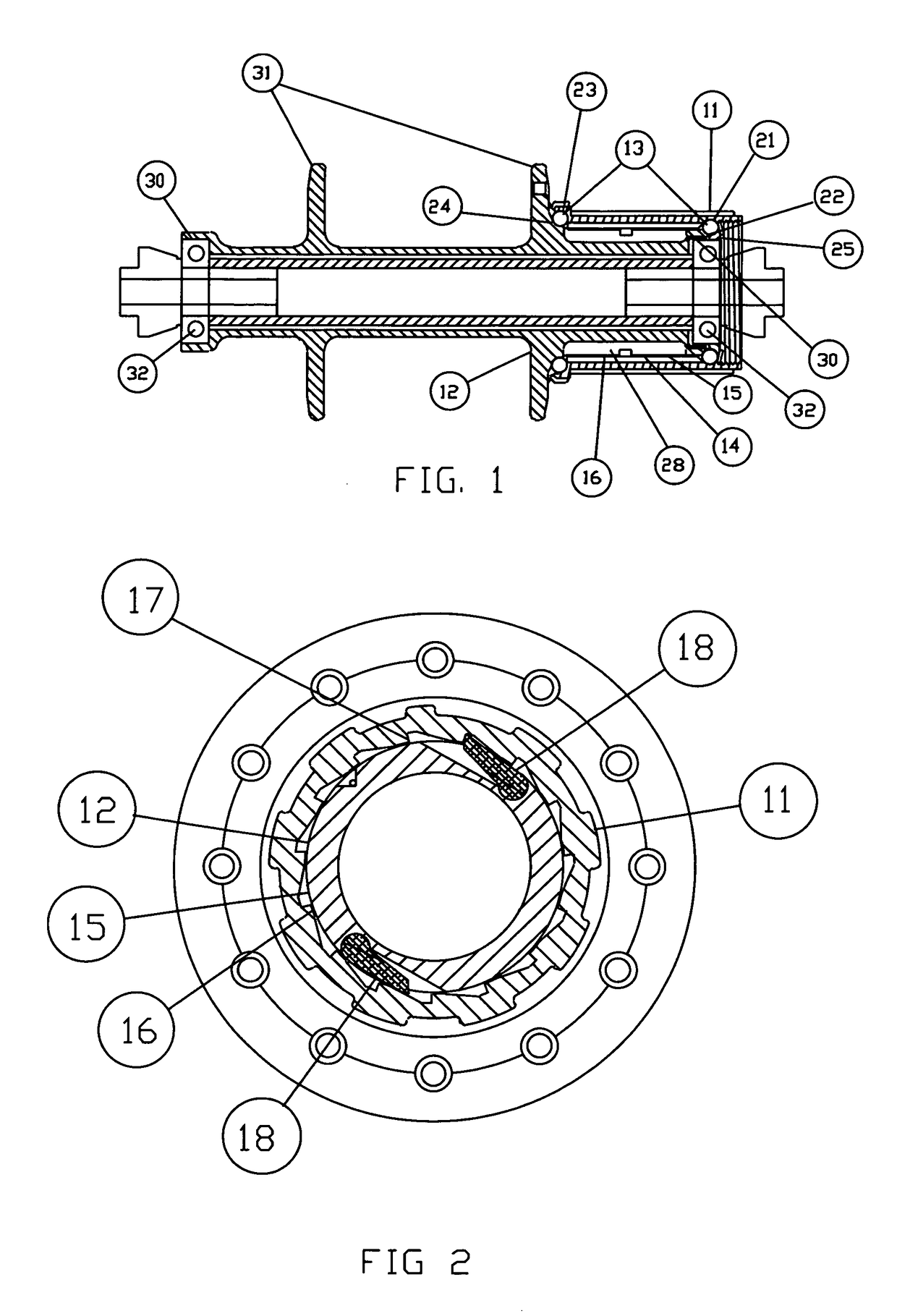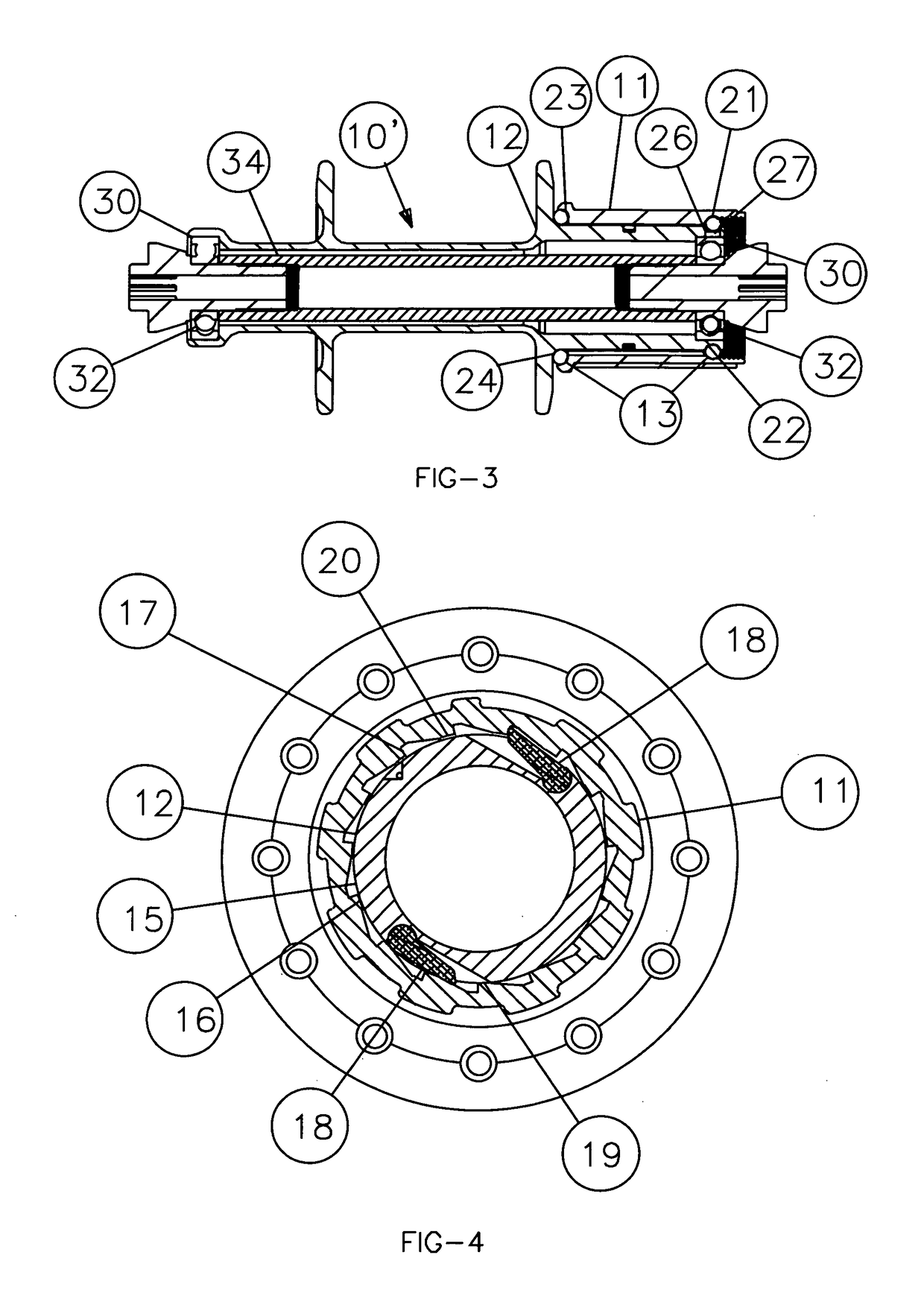Bicycle coasting mechanism
a technology of bicycles and rollers, applied in mechanical actuated clutches, interlocking clutches, transportation and packaging, etc., can solve the problems of coaxial misalignment, special balls are etc., to reduce friction, reduce hardness, and not strong enough to resist deformation
- Summary
- Abstract
- Description
- Claims
- Application Information
AI Technical Summary
Benefits of technology
Problems solved by technology
Method used
Image
Examples
Embodiment Construction
[0015]Referring now to FIG. 1, a hub, indicated generally at 10, including a coaster mechanism, comprises a drive body 11 and a driven body 12, which are supported in spaced, co-axial relationship, for relative rotation, by special ball bearings 13. When driving force is not being transmitted through the hub 10, or only a relatively small driving force is being transmitted, the ball bearings 13 support the drive body 11 and the driven body 12 so that there is a small circumferential gap 14 between an outer contact surface 15 of the driven body 12 and inner contact surfaces 16 of the drive body 11.
[0016]Referring now to FIG. 2, a torque transmission system comprising ratchet teeth 17 and pawls 18 is shown. The torque transmission system is operable, under certain conditions, to transmit torque from the drive body 11 to the driven body 12. When driving force is applied to the drive body 11, one or the other of the two pawls 18 will engage one of the ratchet teeth 17, transmitting torq...
PUM
 Login to View More
Login to View More Abstract
Description
Claims
Application Information
 Login to View More
Login to View More - R&D
- Intellectual Property
- Life Sciences
- Materials
- Tech Scout
- Unparalleled Data Quality
- Higher Quality Content
- 60% Fewer Hallucinations
Browse by: Latest US Patents, China's latest patents, Technical Efficacy Thesaurus, Application Domain, Technology Topic, Popular Technical Reports.
© 2025 PatSnap. All rights reserved.Legal|Privacy policy|Modern Slavery Act Transparency Statement|Sitemap|About US| Contact US: help@patsnap.com


